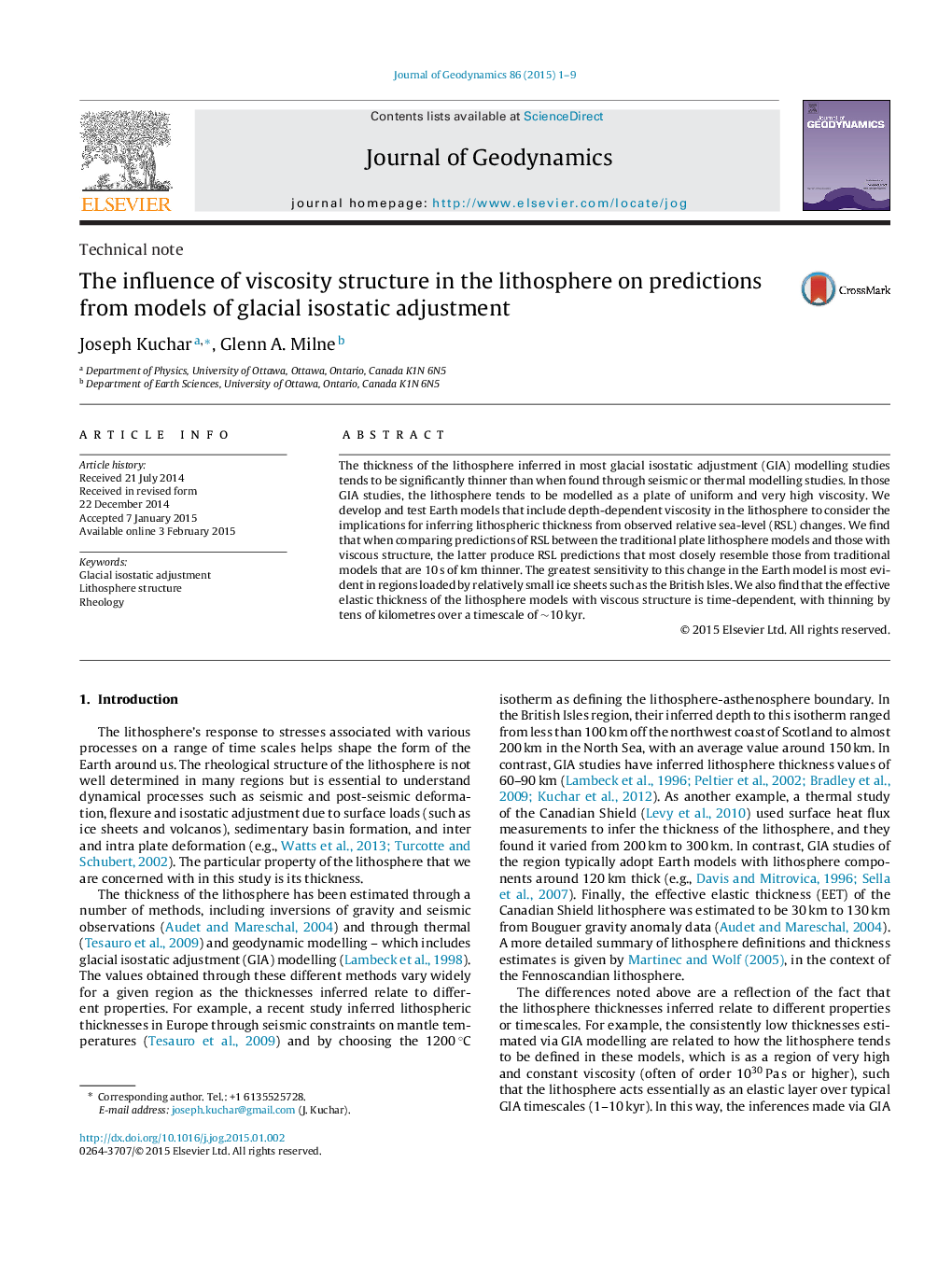| Article ID | Journal | Published Year | Pages | File Type |
|---|---|---|---|---|
| 4688010 | Journal of Geodynamics | 2015 | 9 Pages |
•GIA response of ductile lithosphere models is comparable to that of elastic models that are 10 s of km thinner.•Effective elastic thickness of ductile models decreases by 10 s of km within 10 kyr.•GIA response of ductile lithosphere models is most sensitive to smaller ice sheets.
The thickness of the lithosphere inferred in most glacial isostatic adjustment (GIA) modelling studies tends to be significantly thinner than when found through seismic or thermal modelling studies. In those GIA studies, the lithosphere tends to be modelled as a plate of uniform and very high viscosity. We develop and test Earth models that include depth-dependent viscosity in the lithosphere to consider the implications for inferring lithospheric thickness from observed relative sea-level (RSL) changes. We find that when comparing predictions of RSL between the traditional plate lithosphere models and those with viscous structure, the latter produce RSL predictions that most closely resemble those from traditional models that are 10 s of km thinner. The greatest sensitivity to this change in the Earth model is most evident in regions loaded by relatively small ice sheets such as the British Isles. We also find that the effective elastic thickness of the lithosphere models with viscous structure is time-dependent, with thinning by tens of kilometres over a timescale of ∼10 kyr.
